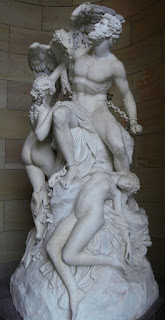After World War II, all major libraries were located in the eastern part of Berlin, so that the western sectors were left with almost no research libraries.
At its opening in 1954 the American Memorial Library, a gift from the United States to the people of Berlin, was the most modern library in Europe. Constructed according to the quintessential American democratic ideal that knowledge and education should be available to all, regardless of social class, this universal library offers a broad spectrum of literature for everyone.
The open library concept where readers could hang out and browse books and magazines at leisure was totally new in Germany. This concept for free "education, information, recreation", the freedom to learn, study, and seek the truth, is also expressed through the building's architecture which conveys a sense of spaciousness and transparency.
The entrance to the library is linear and free of barriers. Once you have entered the vestibule, you can immediately see the library's hall through the glass doors in front of you.
The location of the library (now protected as a historical site) was carefully selected: Only half a mile away from the border, it was clearly visible in East Berlin. The large neon letters on top of the building which read "Gedenkbibliothek" (= Memorial Library) could be seen from the Friedrichstraße train station, then located in the eastern sector.
Since 1995 the library has been part of Berlin's central and regional library. Among other things it possesses a vast film department (50 000 movies), and even a Black Box, where films are projected on a large screen. In the picture-lending library (Artothek) you can borrow paintings, sculptures and figures. In the music department, concerts are held, and there is even a Piano Room (with one Bechtstein and one Steinway) which visitors can use to practice. The room can be reserved for up to two hours a week.
The American Memorial Library truly is a library for the people. Contrary to most libraries I know, the atmosphere is refreshing and lively. Young people of all nationalities meet up to read and chat, do their homework together, or roam the aisles browsing for literature.
The children's and young adult's library, also located in the building and named "Hallescher Komet" (= Halle's Comet as an allusion to the closest subway train station Hallesches Tor) is the largest of its kind in Germany.



























